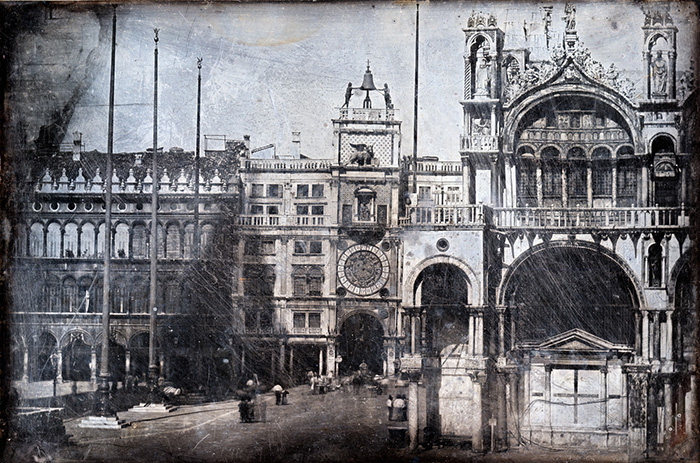
'A Noble Invention': Ruskin's Daguerreotypes of Venice and Verona
14 January - 28 March 2013
Looking through the lens at great Italian architecture, in Venice and Verona.
John Ruskin claimed to have acquired his first daguerreotype photographs whilst he was still a student at Oxford University, but his passion was aroused by purchasing a large number in 1845, from a “poor Frenchman” in Venice.
The Museum’s Whitehouse Collection contains 125 daguerreotypes: one-off plates using the first popular process of permanent photography. These form one of the most important surviving groups of early photographs in the world. Following exhibitions of those covering Tuscany (2010), northern France (2011) and Switzerland (2012), this last display focused on daguerreotypes of Venice and Verona made by John Ruskin (28 of Venice and 16 of Verona).

John Ruskin: The South Front of St Marks in Venice, with the Procuratie and the Clock Tower beyond, c. 1845-52
Made between 1845 and 1852, most of the Venetian subjects in this exhibition depicted St Mark’s Basilica, whilst others featured the Ducal Palace and the Palazzo Bernardo a San Polo, on the Grand Canal of Venice near the Rialto Bridge. The Verona subjects included the city's Cathedral and the churches of San Zeno and Santa Anastasia, as well as the remarkable medieval Scaliger Tombs.
Accompanying this rich display were drawings by Ruskin, contemporary engravings published by him and manuscript material relating to his publication entitled The Stones of Venice.

